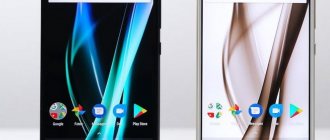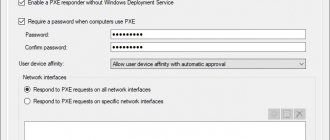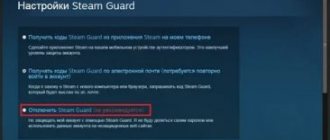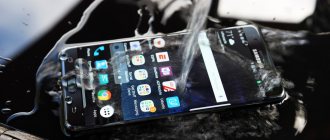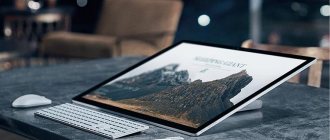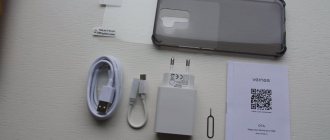Main characteristics of BQ Aquaris U Plus
| Screen | A-SI, 5″, 720×1280, 16M colors, multi-touch 5 touches, Dinorex Glass |
| Iron | 1.4 GHz, Qualcomm Snapdragon 430 8937, 8 cores Cortex-A53, Adreno 505 |
| Memory | RAM 2/3 GB, ROM 16/32 GB, Micro-SD up to 256 GB, Micro-SD - instead of one of the SIM cards |
| Mobile Internet | LTE cat.4 150/50 Mbit/s HSDPA, HSUPA EDGE |
| Mobile networks | LTE Bands 1,3,7,20 UMTS 900, 2100 GSM 850, 900, 1800, 1900 |
| Battery | Li-Ion, 3080 mAh |
| Dimensions | 144 x 70.5 x 7.8 mm |
| Weight | 142 g |
| Camera | 16 MP, flash, autofocus, Samsung 3P3, ƒ/2.0, PDAF, RAW front: 5 MP, Omnivision OV5675, ƒ/2.4 |
| Navigation | GPS, A-GPS, GLONASS |
| OS | Android 6.0 Marshmallow (6.0.1) |
| SIM | 2 x Nano-SIM |
| Price | 13-15 thousand rubles |
The Spaniards from BQ managed to do the almost impossible. They created a smartphone that makes me, a grumbler by nature, have an irresistible desire to call it “go away, my honey” and gently wipe it with a silk cloth. What is even more strange is that there is no particular need to wipe the Aquaris U Plus with a cloth - it doesn’t get dirty very much.
Ideal? Alas, there are questions about the software (trouble with notifications and some other small things). And the games are somehow not going fast enough.
Well, first things first.
Competitors
Who are we looking for? Five inches, LTE, no less memory, no worse battery, no more price.
Philosophical question - processor. Should we add models with the quite fast quad-core MTK6737 to the list of competitors? Or require mandatory eight-core capability? OK. Let's limit ourselves to eight-core ones.
| Chipset | Memory | Screen | Battery | Cameras | "Grey" | "White" | |
| Meizu M3s mini | MTK6750 | 3+32+SD | S-IPS 5″ 720×1280 | 3020 | 13+5 | 8 thousand | 12 thousand |
| Xiaomi Redmi 3S | Snap.430 | 2+32+SD | S-IPS 5″ 720×1280 | 4100 | 13+5 | 8 thousand | 13 thousand |
| Xiaomi Redmi 3 | Snap.616 | 2+16+SD | S-IPS 5″ 720×1280 | 4100 | 13+5 | 8 thousand | 16 thousand |
| Xiaomi Redmi 3 Pro | Snap.616 | 3+32+SD | S-IPS 5″ 720×1280 | 4100 | 13+5 | 11 thousand | 16 thousand |
| Ulefone Metal | MTK6753 | 3+16+SD | S-IPS 5″ 720×1280 | 3050 | 13+5 | 8 thousand | — |
| Highscreen Power Five EVO | MTK6753 | 2+16+SD | S-IPS 5″ 720×1280 | 5000 | 13+5 | — | 10-12 thousand |
| Lenovo P70 | MTK6752 | 2+16+SD | S-IPS 5″ 720×1280 | 4000 | 13+5 | — | 13-15 thousand |
As you can see, even if you don’t take into account quad-core processors, there are competitors, and very serious ones at that. And if we consider “gray” devices, then it’s just a disaster.
Appearance
| Weight | 142 g |
| Size | 144 x 70.5 x 7.8 mm |
| Protection | No |
There are two color options. White with gold and black with gray. We don’t see anything white and gold on sale in our country yet.
Very nice metal body. Non-separable, monolithic, “my favorite color-size-weight.”
The workmanship is beyond praise.
A little thing that slightly scratches the first eye is the BQ logo. Not the one with the letters B and Q, but the one with five dots. BQ decided it would be a good idea to use this logo as a home button. Only these dots look like an unfinished circle. And my first reaction when I picked up the BQ was - “Oh, has the paint fallen off the button already?”
There is a multi-color LED.
Boring details about appearance
Above the screen everything is as usual - sensors, front camera, LED, speaker.
Below the screen are Android touch buttons without backlight. Interestingly, you can also enable on-screen buttons in the settings. But sensory ones, of course, won’t get away from this.
At the back there is a camera with a flash on top, and under it, in its traditional place, there is a fingerprint sensor.
At the bottom there is a loud speaker (the quality is mediocre).
On the top edge there is Micro-USB, a 3.5 mm audio output, and a microphone for noise reduction.
The bottom edge is almost empty, there is only the main microphone.
The volume rocker and power button are in their rightful place on the right side.
On the left is a tray for cards. Alas, it is combined. Either two Nano-SIMs, or one Nano-SIM and a Micro-SD memory card.
Ergonomics
BQ Aquaris X5 Plus is a thin and light smartphone. Its weight is 145 grams and its thickness is just under eight millimeters. Despite this, the engineers managed to fit a fairly large battery into the device.
Thanks to the matte back surface, holding the smartphone is comfortable, it does not slip out of your hands and is pleasant to the touch. There are practically no fingerprints left on the back panel.
As for the biometric scanner, its location on the rear panel is quite convenient for everyday use. As soon as you take the smartphone in your hand, your index finger immediately falls into the scanning zone. There is no need to press the unlock key; you just need to place your finger on the scanner, and the smartphone, recognizing its owner, instantly opens the home screen. The sensor here, although not ultrasonic, is very sensitive. If the fingerprint is correctly calibrated, it works in 10 cases out of 10. The only usage scenario in which problems arise with fingerprint unlocking is when you are driving and the smartphone is inserted into the car holder - you will have to use a pattern key or password.
The BQ Aquaris X5 Plus smartphone is convenient to use with one hand; many have already gotten used to the five-inch display diagonal, and this size does not cause any discomfort. The frames around the screen are within normal limits, not too wide, and the touch control buttons placed on the panel do not eat up precious space on the display. However, the smartphone provides the ability to enable soft buttons - the manufacturer decided to leave the choice to the user. In addition, this will be a plus in a situation if the touch buttons fail, for example, due to mechanical damage.
The display is coated with a very high-quality oleophobic compound and there are almost no traces of touch left on it.
Internals (iron)
| AnTuTu | 41313 (v6.2.1) |
| AnTuTu | 38021 (v5.7.1) |
| Chipset | Qualcomm Snapdragon 430 8937 |
| Cores | 8 cores Cortex-A53 1.4 GHz |
| GPU | Adreno 505 |
| RAM (free) | 2 GB (1 GB) |
| ROM (free) | 16 GB (8.5 GB) |
| Micro-SD | Up to 256 GB |
The processor is from the second weakest Snapdregon line. Weaker - only two hundredths. However, even here there are already eight cores.
Personally, my impressions of the speed of the smartphone are quite positive. However, I’m not particularly demanding in this regard, you know.
There is enough memory. I tested the younger model - 2 + 16 GB. Do I need to pay extra for 3 + 32 GB? The question is philosophical. If you plan to use two SIM cards, then probably yes. Especially because of the photo - if you shoot in RAW, the files will be huge.
It is a rare case when a relatively inexpensive device has many, many sensors. There is a gyroscope and a compass. Well, the traditional triple accelerometer-illuminance-approximation, of course, is also in place.
The fingerprint sensor is located on the back. The quality is ok. Doesn't glitch, doesn't miss.
Synthetic test results
Screen
| Matrix | A-SI |
| Diagonal | 5″ |
| Permission | 720×1280 |
| Multi-touch | 5 |
| Max white brightness | 350 cd/m2 |
| Min white brightness | 8 cd/m2 |
| Contrast | 810:1 |
| Color temp. | 7100K |
| Gloves | No |
A decent middle class matrix.
The matrix is called “LCD A-SI”. What this means is difficult to understand. If you believe my naked eye - close to IPS, LTPS, etc. In short, a completely normal matrix.
Good oleophobic coating.
There are no newfangled 2.5D roundings; instead, the screen is surrounded by a micro-edge. This is for the better, in my opinion - the glass will be more intact.
Good maximum brightness, good minimum.
The only thing missing for complete happiness is the ability to work with gloves.
Display
Let's be clear that the BQ Aquaris V's display is not perfect. Its main drawback is clearly visible, but only manifests itself when viewed at a diagonal angle. In this position, the IPS matrix fades greatly and loses some of its shades. However, from other viewing angles, colors are stable, brightness and contrast are maintained. The display looks contrasty. And this is not surprising, because the stated maximum backlight brightness reaches 520 nits.
HD resolution on a 5.2″ display is enough so that it does not seem “loose” and pixelated. In addition, it allows you to save computing power on image processing.
BQ did not skimp on the capabilities of capacitive multi-touch. The sensor recognizes 10 fingers simultaneously and tracks touches on the screen when the screen is off to enable quick unlocking with a double tap. Another software feature worth mentioning is the night mode, which can be activated according to a schedule or manually. It's a pity that there is no way to adjust the filter density. The oleophobic coating effectively protects the screen from streaks and dirt, and if they do appear, it makes the screen easier to clean.
The 2.5D glass that protects the display is Dinorex from the Japanese company NEG. It definitely adds beauty and ergonomics to the BQ Aquaris V, but you should handle the smartphone with care. Micro-scratches appeared on the glass of our sample during testing.
Operating system and other software
Operating system - Android 6.0.1 Marshmallow.
The first thing the smartphone did was download an update weighing just over a gigabyte. And only on the second try... The first time it broke off at about the fifth minute. Well, I downloaded it - thanks. Between downloads, I managed to go to the “Camera” and the menu items “Front”, “Front”, “Video”, “Delights” somehow made me feel a little uneasy. The update removed such obvious glitches. Those. the work is in full swing, which is good news.
However, there is still something to work on. Russification is not perfect. The first level was licked normally. If you dig deeper, you’ll get something in English in response—it’s like nothing to do.
Pre-installed third-party garbage is not visible - this is good. The search bar from Google is nailed down tightly on all screens - this is bad.
About problems with notifications - just below.
More screenshots
Battery
I was pleased with the battery. The capacity, by today's standards, is quite average - 3080 mAh. But the test results gave an average of 144% of my standard. 7-8 hours of games, 11-14 hours of video, etc. Very good. It’s probably only possible to discharge the battery in a day only by constantly working as a navigator with the screen turned on.
| Full discharge time | Discharge in an hour | |
| Video | 13:50 | 7.2% |
| Video HD | 11:00 | 9.0% |
| Easy game | 8:00 | 12.5% |
| Hard game | 6:10 | 16.1% |
| Telephone | 17:30 | 5.7% |
| Music | 57:20 | 1.7% |
| GPS on 3G window | 5:50 | 17.3% |
| GPS on Wi-Fi window | 6:30 | 15.5% |
| White screen | 16:00 | 6.2% |
| White screen 100% | 8:20 | 12.0% |
| White screen 0% | 30:20 | 3.3% |
| Internet 3G | 7:00 | 14.2% |
| Internet Wi-Fi | 10:50 | 9.3% |
BQ Aquaris U Plus as a photo and video camera
| Rear: | 16 MP, PDAF, ƒ/2.0 |
| Video: | FHD, 30 fps |
| Front: | 5 MP, FF, ƒ/2.4 |
The main camera corresponds to the smartphone class, i.e. quite good average. It is extremely difficult to get something decent at night. At home with artificial lighting - depending on your luck (at home my camera was constantly blurring the white balance). If you go outside into daylight, the shots you get, for the most part, are very decent. Unfortunately, I can’t say what will happen in bright sunlight - we haven’t had such light in St. Petersburg for a long time.
A nice feature is that the camera can shoot in RAW. Check the box in the settings - and for each photo you get two files - a regular jpg size and a huge dng file (32 MB / piece).
However, whether you personally need “raw” files is a philosophical question. They take up a lot of space. Plus you have to tinker with them... But, of course, correcting the same white balance is a matter of seconds. Or raising the brightness there is also sometimes useful.
If you don’t mind the space on the memory card, you can, of course, use RAW. Just better not to forget that you are using it and from time to time to lightly clean the folder with photos... Otherwise - thirty photos - and the gigabyte is gone.
A few more photos
More photos
Example video
Interface
RAW Editing (Snapseed)
The front camera didn't disappoint either. Good quality.
Camera
Taking a look at the BQ Aquaris V's viewfinder app can leave you disappointed. The fuzzy, soapy picture and low resolution are unlikely to please, but don’t rush to conclusions. Instead, you should take a photo and open it in the gallery.
The difference hardly requires additional comment. Apparently, the manufacturer deliberately simplified the image in the viewfinder, but this did not affect the final result. This smartphone, modest in appearance and price, hides solid photographic capabilities. Spanish developers used the SONY IMX386 sensor as the main camera, which was installed, for example, in smartphones such as Xiaomi Mi6, Meizu MX6, Motorola Moto Z2.
The matrix of this camera has a resolution of 12 MP, is made using Big Pixel technology and looks at the world through a 6-lens Largan lens. Thanks to it, the BQ Aquaris V is easily ahead of smartphones in its price category in terms of image quality and can compete with more expensive devices.
The shots are not perfect, but given the positioning of the BQ Aquaris V, highlighting their shortcomings would be nitpicking. A potential buyer should be warned separately only about the not very accurate autofocus.
For the rest, you can rely on automation, and if the standard camera application fails, it’s not difficult to correct the photo manually, because the smartphone supports the Camera2 API and is capable of shooting in uncompressed formats. The quality of video shooting, whose maximum resolution reaches 1080p at 30 frames per second, is also very decent. Slow-motion video shooting at 120 frames per second is available as an option, but with a noticeable loss of quality and resolution - 480p.
The front camera does not have such outstanding characteristics as the main one, but it is also a solution from a well-known manufacturer. The Samsung S5K4H8 sensor with a resolution of 8 MP takes detailed selfies with the correct white balance, supports HDR, Face Beauty mode and activates the front flash in low light conditions.
BQ Aquaris U Plus as a GPS navigator
The tracks are neat, with the exception of an annoying anomaly on Shcherbakova Street. There I walked straight along the inner side of the street and did not pass through any houses.
Taking into account the presence of GLONASS support, a good screen and a decent battery, we have a very good pedestrian navigator. Although, of course, the rate of battery consumption with GPS turned on could be lower... Discharging a smartphone in a day in this mode is more than realistic.
Test tracks
BQ Aquaris X Pro 64GB
Anonymous, 10/19/2017
Advantages: - a lot of RAM, excellent speed, switching applications - battery life - excellent fingerprint scanner - good screen - fairly modern Android without garbage + they promise updates for quite a long time (this is the flagship of the line) - build quality - design Disadvantages: - camera didn't live up to expectations, although it's certainly not bad. - glass on the back... well, why?... - questions about NFC operation - lack of support for the exFat file system for SD cards Comment: I’ve been using it for a month. In short: I am very pleased with the phone, although not without its nuances.
On the plus side: it is assembled well, there are no backlashes or creaks, it looks nice. I don’t play games, mostly messengers, maps/navigator, browser, reading. Therefore, the performance is enough for the eyes. All applications fit easily into 4 GB of RAM and switch instantly. I also really like the autonomy: 2 or even 3 days on one charge! Samsung Galaxy S4 (hereinafter referred to as SGS4) in the same mode did not survive until the evening (the battery was fresh).
On the nuances: I was choosing between Aquaris X and X Pro. Pro decided to take 4 GB of RAM and a seemingly more advanced camera. But I'm not particularly happy with it. Inferior to the 2013 SGS4. There is quite a lot of noise (or traces of noise reduction), despite the large pixel size. The macro is also not very good, focusing at least 10 cm. There are reviews of the X Pro camera online. You can draw your own conclusion. I must say, there are some pretty spectacular photos! See incl. in the BQ telegram channel (https://t.me/BQclub).
NFC is short-range here. The Troika card can be read almost right away. Android Pay doesn't work very well. I use it two to three times a day. It happened that it was impossible to pay at all, maybe in 2% of cases. But you often have to move your phone around the terminal for the payment to go through. However, there are terminals where everything goes quickly and without fuss. But in general, the overall convenience of using Android Pay is inferior to that of SGS4.
The lack of exFat support is somewhat annoying. For memory cards it is clearly better than FAT32. But at the same time, the developers directly say that they are not going to add it, because “there is no request for it, and license fees must be paid.” True, with 64 GB of internal memory, you can completely forget about the SD card. Or install a custom kernel (see the corresponding topic on 4pda), which supports exFat and seems to be even better than stock in terms of power consumption.
I can’t say anything about the sound; I’m not an audiophile at all. It exists and suits me, as well as my interlocutors, that’s all.
BQ Aquaris U Plus as a toy
Surprised. I thought it would be better. Lags that appear from time to time in such undemanding games like Pitfall or Real Racing are very strange. And in Asphalt, devices running some kind of MTK6737 behave better.
Those. The toy suits itself, everything is smooth and beautiful. It goes, goes, goes, maybe a couple of minutes there. Then - bam - such a noticeable micro-pause. Those. There are few lags, but they are large.
All the more strange is that in the Epic Citadel U Plus test it produced as much as 57 FPS on Ultra High Quality - how much more?
On the other hand, I didn’t notice any problems with all the other toys.
| A game | Problems? |
| Angry Birds Go! | (Except for the fact that it crashes and freezes, but it plays smoothly. But now it generally hangs on any smartphone). |
| Pitfall! | It falters at times. |
| Shoot The Zombirds | Everything is fine |
| Asphalt 8: Take Off | Play on low settings On maximum graphics it lags and is quite noticeable. |
| Real Racing 3 | You can catch several lags during a race. Usually this does not affect the game, but it is unpleasant. |
| NOVA 3 | Everything is fine |
| Need for Speed Most Wanted | 30 seconds of game time = 33 seconds of real time. |
| Grand Theft Auto: San Andreas | Everything is fine |
| Dead Trigger 2 | Maximum graphics |
| Riptide GP2 | Everything is fine |
| FIFA 15 | Everything is fine |
Glitches and other little things
1. The main disappointment. Notifications from applications are not received well. Sometimes they get there, but with long pauses. It happens that they disappear altogether. I have repeatedly observed similar problems on test devices from Huawei. And BQ has the same thing. Moreover, I have two BQ devices in my hands, Aquaris U Plus and BQ Aquaris X5 Plus - and they behave in this regard in exactly the same way.
2. The second problem is quite unusual, although also not unique. Torrents are shut down (and also on both BQs). No, I'm not crazy about downloading torrents using smartphones, this is just one of my battery tests. You launch a torrent, set the desired download speed, and measure the speed at which the battery drains. What happens on BQ smartphones? The torrent works for an hour or two or three, after which it stupidly and steadily stops.
I contacted BQ support. The support service asked if the power saving mode was turned on on smartphones. He answered no. The support service said that they had gone to translate my question into Spanish and communicate with Spanish developers... I talked, but in the end I couldn’t help in any way.
By the way, guess what other smartphones I had a similar glitch with torrents on? Huawei P9 lite and Huawei P9 Plus. And there I also pestered the support service with stupid questions and also got nothing from them.
3. When I turned it on for the first time, the smartphone suggested to me: “Protect your BQ” - they say, pay a little money - and you will be protected from screen damage, swimming and theft - in short, some kind of insurance. Naturally, I had no desire to pay money for a test smartphone, so then I safely skipped this dialogue.
When I restarted the BQ Plus program (after the initial setup of the smartphone), I learned that protection costs 20 euros/year for Spain. But just then the smartphone downloaded its gigabyte update - and I had no time for BQ Plus.
I remembered about BQ Plus again when I finished testing. I launched it and suddenly received a message in clear English: “You device is NOT covered by BQ Plus. Your device no longer meets the conditions to enjoy BQ Plus.”
I went to the BQ website and found a section about protection. I was surprised to discover that it consists solely of a form where it is suggested to contact the support service. Contacted. I received an auto-response in pure Spanish...
In short, it seems that BQ Plus does not work in our country yet. It's a pity. I have friends who would find a program like this very useful...
Design and equipment
Let's go over the kit quickly, there is nothing special about it:
- BQ Aquaris x5 Plus
- MicroUSB/USB cable
- Instructions
- Warranty card
No headphones. BQ takes care of us and does not include plugs for 150 rubles in the kit just for show. Thank you! True, the adapter was not delivered either. Charge as you wish.
The Aquaris does not have an outstanding design. On the contrary, the designers clearly took inspiration from the iPhone 6 Plus. Same stripes, same key layout. The only difference is that the fingerprint scanner is located differently - on the back panel of the device. There is also a dual LED flash here. And here’s another difference from the “six” - it is located under the camera, and not, like many smartphones, on the side.
On the side there is a power/unlock button and a volume rocker. The tactile sensations are pleasant: the clicks are clear and precise. It's really comfortable for your fingers to glide over the matte finish. I don't feel like I'm about to drop my phone. There is a standard MicroUSB connector at the bottom, but they decided to move the 3.5 mm audio output to the top. It was unusual to start plugging in headphones on top again after using an iPhone.
The body is made of good plastic, it does not blur and does not collect dirt. The design is solid, but the phone is not tightly assembled everywhere: the volume key is loose, for example.
In terms of usability, the phone fits well in the hand. I was surprised by the ease of use of such a 5-inch smartphone, I did not expect it. After 5s it was hard to get used to the first couple of hours, but then everything went like clockwork. And he twisted it and turned it, whatever he did.
